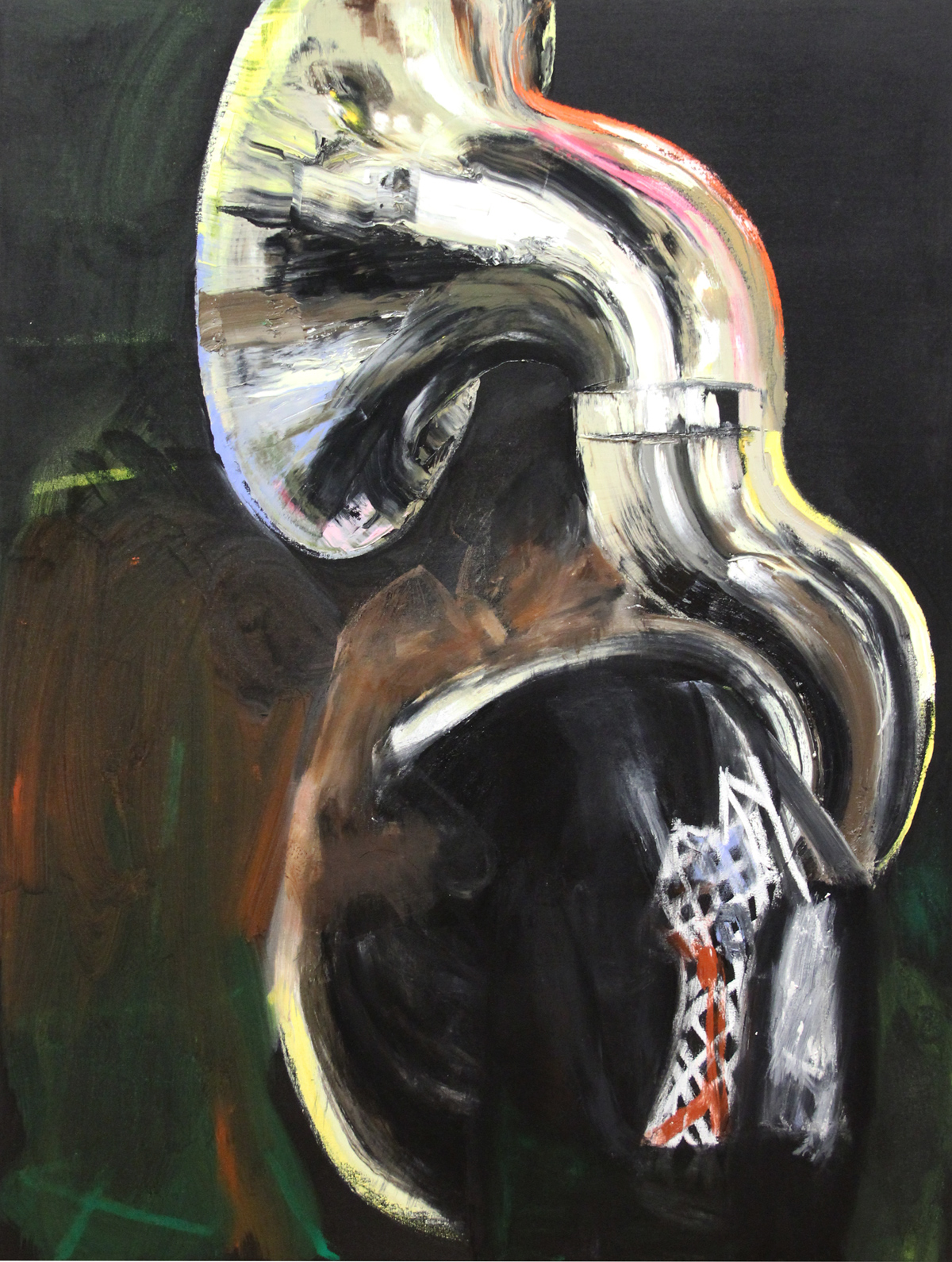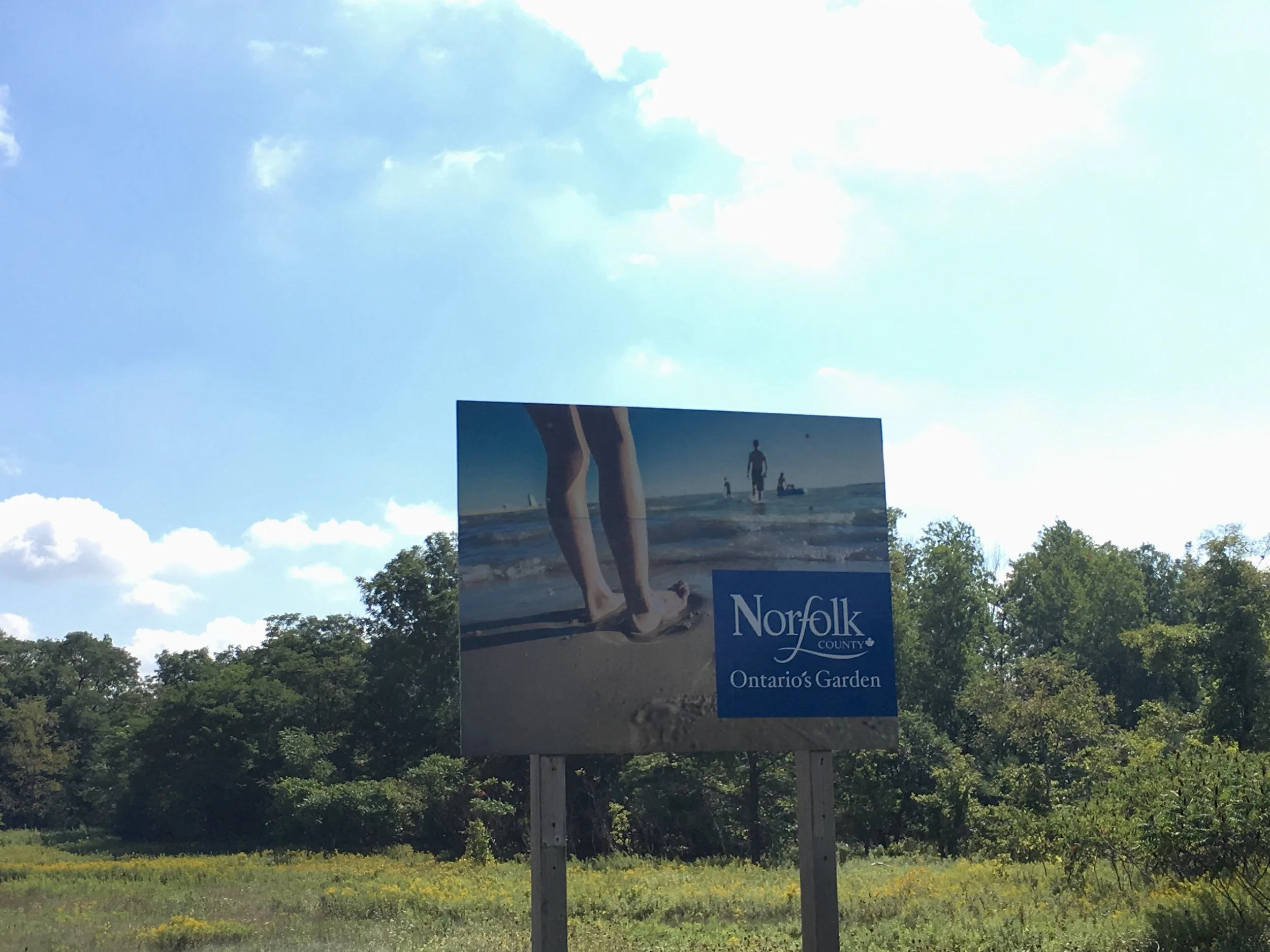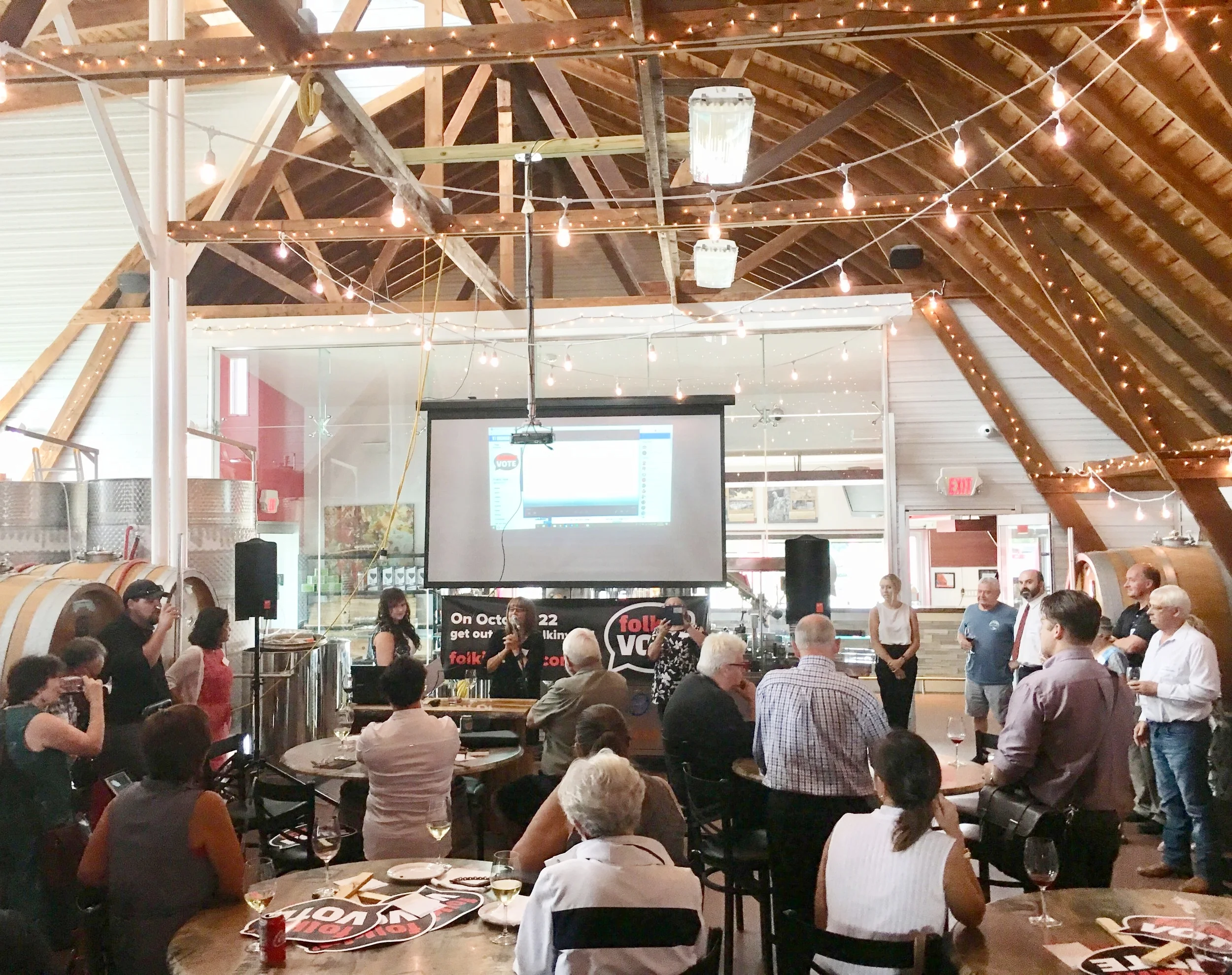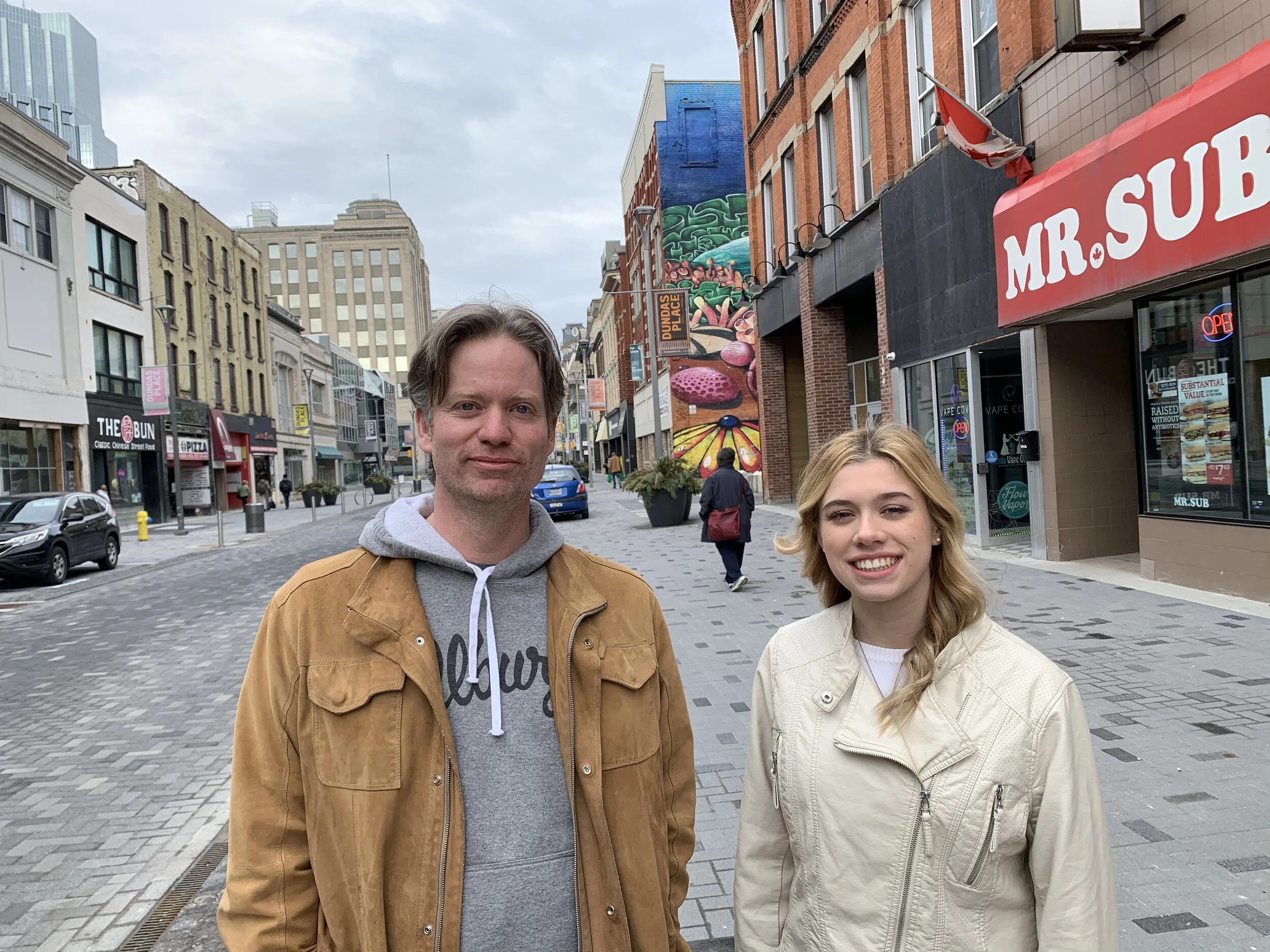Erik Olson: Rolling Down the Road
Erik Olson took a motorcycle trip around the United States in spring 2018 and makes some of the people and places that he encountered visible in his new exhibition of paintings, ‘Hold the Line’, on display at the Michael Gibson Gallery in London from September 20th to October 27th. This is an exhibition well worth exploring. The themes are compelling: travel, border crossings, migration, individual and collective truth, urban and rural life, music, and the idea of home.
Born in Calgary, Alberta, and now based in Düsseldorf, Germany, Olson has established a strong relationship with the team at the Michael Gibson Gallery, including president Michael Gibson and associate director Jennie Kraehling. Two years ago, Gibson showed Olson the vacant second floor of the gallery in downtown London, and subsequently Olson made a proposal: in April 2018, he would buy a motorcycle in Vancouver, travel across the United States, and arrive at the gallery in London by July 1st to work in studio space on the second floor. An agreement was reached, and the result is a collection of paintings based on this journey, including images of what the artist experienced in places like Big Sur, El Paso, New Orleans, and New York City.
Bonneville - Oil on Canvas, 2017-2018 - 71x98½ in.
On the canvasses, we find a reflection of contemporary America, from the hypnotic beauty of the landscape to the exuberant music on the streets to the struggles of those at the margins. All this comes through exquisitely in the forceful colours and spirited brushwork for which Olson has become well known. The exhibition also provides an interesting counterpoint to one of his previous collections, ‘Out of India’, that documented his motorcycle trek through that country. One could argue that he seems most inspired when movement is part of the equation.
Big Sur - Oil on Canvas, 2018 - 72x96 in.
Erik Olson was present at the opening reception for the exhibition on Thursday, September 20th. I have known Olson for close to a decade, and have had the opportunity to write about his work a few times previously. The opening at the Michael Gibson Gallery offered a nice occasion for us to chat briefly about a shared interest – the music and legacy of Bob Dylan. Olson has a painting in the exhibition called ‘Big Pink’, a large-scale and loving account of the famed house in West Saugerties, New York, where Dylan and The Band recorded songs in the summer of 1967. Those songs would surface eventually as The Basement Tapes. Olson visited the Big Pink property on his motorcycle trip. One of our teenage journalists at young & free press, Jenn Klassen, attended the opening reception as well and got a little insight, through the artwork and conversation, into what author Greil Marcus referred to as the ‘invisible republic’ of the United States, or ‘the old, weird America’ that he felt Dylan and the Band found again in the music made at Big Pink. Only an artist as talented as Erik Olson could make something so invisible feel so real on canvas.
Big Pink - Oil on Canvas, 2018 - 72x96 in.
Two fun facts: first, in 2014, Olson moved to Düsseldorf to study at the Kunstakademie as guest student of artist Peter Doig; second, Olson has artwork in the collections of the Richard Ivey School of Business, Alberta Foundation for the Arts, McCarthy Tetrault LLP, RBC and TD Bank.
Here is a brief interview with Erik Olson. I took the photo of Erik and Jenn at the top of the article. All the images of paintings are courtesy of the Michael Gibson Gallery.
Y&FP: You mentioned visiting a former family home in Boston as part of your motorcycle trip, as well as feeling like visiting Big Pink near Woodstock, New York, was akin to a spiritual experience because of your connection to the music of Bob Dylan. When you set off on your trip, how much were you thinking about a kind of search for home, and did you come across any places where you felt especially at home?
EO: I've spent a lot of time on the road over the years. My base and studio is in Düsseldorf these days but I've been on this motorcycle trip for the past 8 months; after all that travel, you do start wondering about this idea of home.
One of the artistic destinations that I wanted to see on this trip was in Boston: Gauguin's masterpiece 'Where Do We Come From? What Are We? Where Are We Going?'. While there I decided to drive over to my old neighbourhood and found the big old green home where me and my family used to live in Boston. I hadn't seen that house in 23 years.
The next day I headed west and visited Woodstock and in an unplanned kind of a way, found the address of 'Big Pink'. For me, driving along that beautiful country road and coming through the forest lane into the clearing and seeing 'Big Pink' was something akin to finding something you thought no longer existed. It reminded me that not everything has been destroyed, there are still some things that remain true.
Y&FP: We understand that, before taking the motorcycle journey, you had arranged with Michael Gibson that you would use the second floor of his gallery building in London as a studio. How did having this arrangement impact the way that you travelled and thought about the collection of paintings that you gradually put together, first in your imagination and then on canvas?
EO: It just gave me the free space to pour out my ideas from the trip onto the canvases. I try to fill up my mind, sketchbooks and camera with subject matter on a trip like this. After that, it just takes time to figure out how to unload it. As a painter, you need the physical space to do this in. You need that open place.
Y&FP: We loved looking at and thinking about the entire 'Hold The Line' exhibition. There are two paintings, though, that we found ourselves wondering about a bit, and we hope that you might be able to tell us the initial spark that led you to paint each one ... first, the 'Girl from Juárez', and second, 'New Orleans'.
EO: Passing through El Paso on the main highway I was struck by how close the southern border is to the road. I looked out over the border and the Rio Grande and I could see clearly the city of Ciudad Juárez rising up on the hillside. I could tell instantly that it was Mexico. The colours and the texture of the cityscape was in contrast to what I was seeing on the El Paso side of the border. ‘Girl from Juárez’ is about the idea of a young person crossing that border and all the consequences that that may entail.
Girl from Juárez - Oil on Canvas, 2018 - 48x36 in.
New Orleans is a city I'd always wanted to visit. I'm a Michael Ondaatje fan and I read his novel Coming Through Slaughter about the jazz cornetist Buddy Bolden years ago. The novel always stuck with me and I guess in a romantic kind of way I wanted to find that ragtime energy of the deep south in New Orleans.
My painting New Orleans comes out of the second night I was there, the summer heat of the evening and walking in and amongst a group of young musicians that were part of a walking brass band on Bourbon Street. I painted the tuba player, with a backpack, blowing really hard into the instrument. In the reflections off the brass you could see the activity of the night street, neon signs and lights and that energy of New Orleans. It's no longer the city it was when Bolden was a player there, it's changed ... but I swear that wild unhinged energy still remains.
New Orleans - Oil on Canvas, 2018 - 48x36 in.











